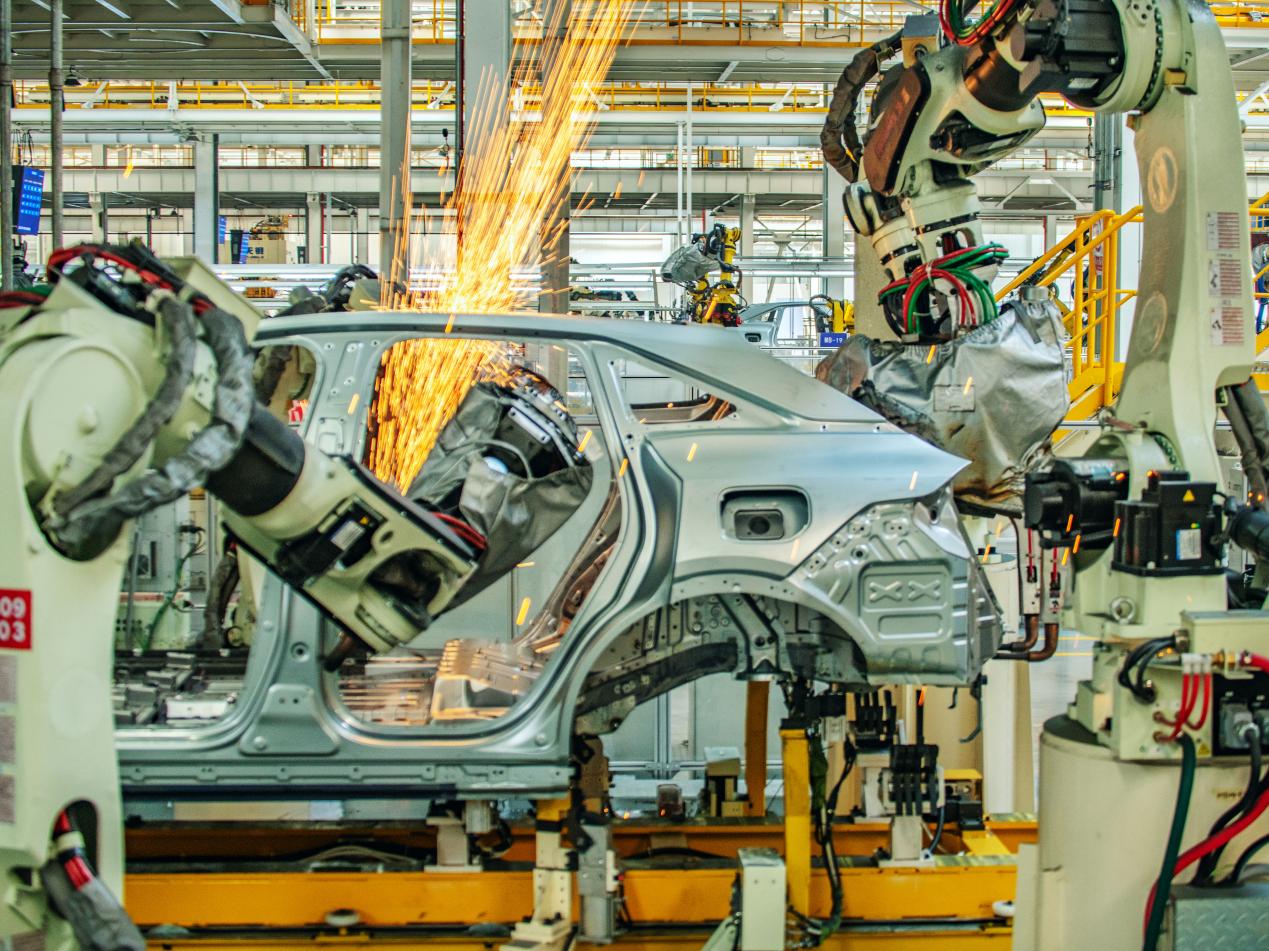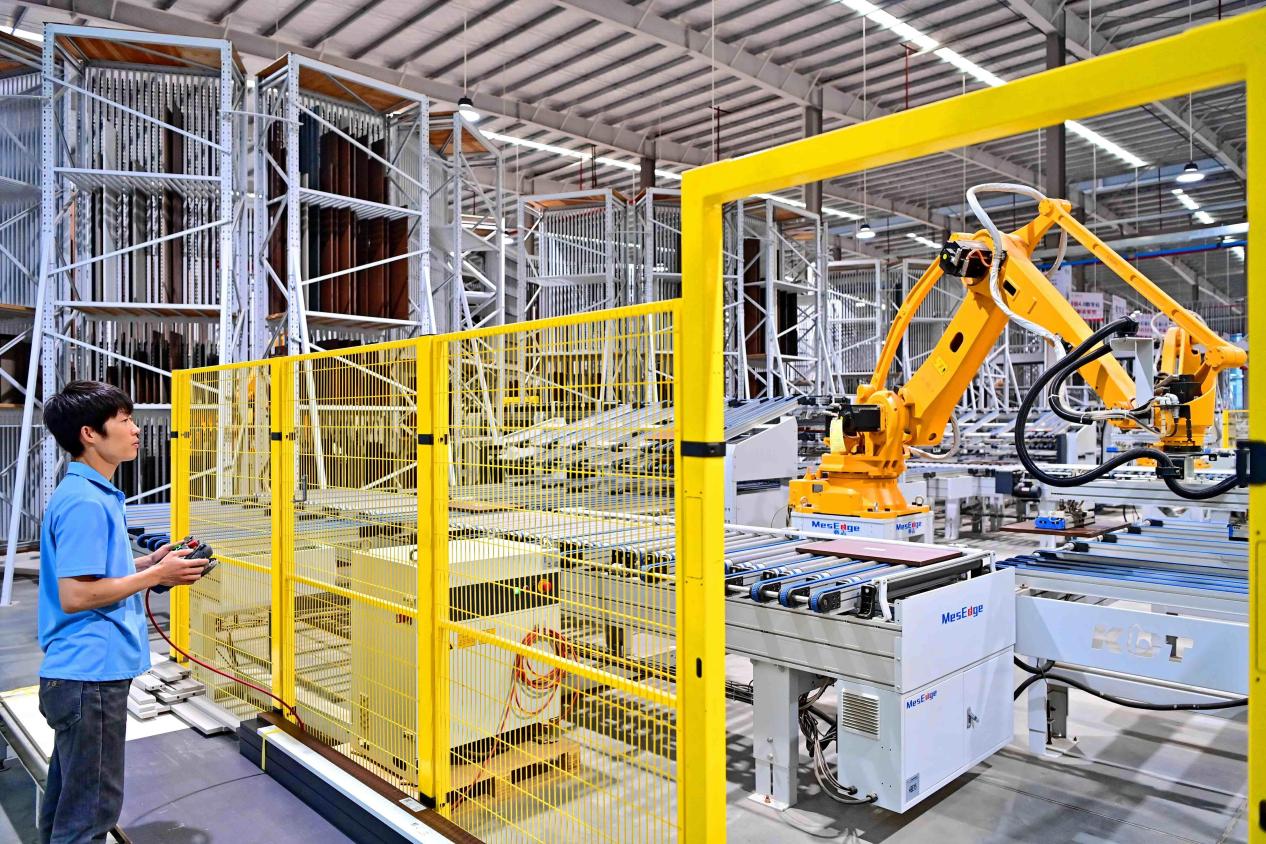




- BRNN
- BRI News
- BRNN News
- Database
Official Documents Polices and Regulations
Inter-government Documents International Cooperation BRI Countries
Business Guide Economic Data BRI Data
Trade
Investment Projects Latest projects
Cases - Content Pool

Robotic arms weld frames of new energy vehicles in an automated workshop of Chinese carmaker Chang'an Automobile in Nanjing, east China's Jiangsu province. (Photo/Zhu Hongsheng)
When proposing to build a modernized industrial system and reinforce the foundations of the real economy, the recommendations for formulating the 15th Five-Year Plan stress that the share of manufacturing in the national economy should be kept at an appropriate level.
But what exactly is an "appropriate level"?
It should be neither excessively high nor unduly low. The share of manufacturing in GDP is shaped not only by the sector itself but also by the performance and expansion of services and other industries. In recent years, as China's economic size has continued to grow and its structure has steadily upgraded, the share of services has generally risen, while that of manufacturing has declined relative to earlier periods.
Between 2010 and 2024, China's industrial structure shifted from 10.2:46.8:43.0 to 6.8:36.5:56.7. Although the absolute size of manufacturing continued to expand, its share in GDP moderately declined, an evolution consistent with the broader development trajectories of many other economies.
But the share must not fall too low. A look at world economic history shows that many major economic powerhouses rose to prominence through manufacturing. Yet some economies, after entering a post-industrial stage, moved too quickly toward financialization and offshoring, resulting in "industrial hollowing-out," which ultimately affected economic growth and employment stability. For a major country like China, such risks must be avoided.
For China during the 15th Five-Year Plan period, manufacturing is central to enhancing economic strength, scientific and technological capabilities, and overall national power, as well as to improving people's well-being. The sector remains the material basis of daily life, the backbone supporting countless industries, and a key absorber of employment.
At the same time, growing global competition requires China's manufacturing to aim higher and move faster. Although China has ranked as the world's largest manufacturing nation for many years, there is no room for complacency.

Photo shows humanoid industrial robot manufactured in an industrial park in Liuzhou, south China's Guangxi Zhuang autonomous region. (Photo/Li Hanchi)
A new round of technological revolution and industrial transformation is unfolding, with new technologies, new business forms, and new industries emerging at a rapid pace, ringing both opportunities and challenges. Seizing opportunities can help consolidate advantages; missing them risks falling behind. In this context, China must keep the focus of economic development squarely on the real economy. By accelerating the building of a manufacturing powerhouse, the country can navigate profound global changes with greater initiative and confidence.
The recommendations for the 15th Five-Year Plan outline a wide range of concrete tasks related to developing a modernized industrial system with advanced manufacturing as the backbone, upgrading traditional industries, and fostering emerging industries and industries of the future. These efforts collectively drive the transition from manufacturing "scale" to "strength."
In 2024, China's manufacturing value added accounted for nearly 30 percent of the global total. Among 500 major industrial products worldwide, China ranks first in output for more than 220 of them. The country now produces over 70 percent of the world's lithium batteries and photovoltaic modules, and more than 60 percent of the world's new-energy vehicles and wind power equipment. Over the past five years, China's manufacturing sector continued to grow in volume and improve in quality, achieving hard-earned progress.
At the same time, notable weak links and bottlenecks remain. China's capacity for original innovation still needs strengthening. Some key industries face technological gaps. Many traditional sectors remain positioned at the lower end of global value chains. These challenges must be addressed for China to advance from being a large manufacturing country to a strong one.

An engineer controls a robotic arm to cut furniture boards in a smart workshop of a furniture company in Ganzhou, east China's Jiangxi province. (Photo/Zhu Haipeng)
Looking toward the 15th Five-Year Plan period, or the next five years, whether in "promoting upgrading in key industries," "accelerating transition toward digitalization and intelligent transformation," "creating new pillar industries," or "making forward-looking arrangements for future industries" the priority will be to pursue higher standards and drive improvement across sectors, fields, and value-chain segments.
Ultimately, China's commitment to keeping the share of manufacturing in the national economy at an appropriate level reflects the country's assessment of development trends and practical needs, and sends a clear policy signal on the importance of the real economy.
By continuing to deepen its industrial foundations and advance the high-quality development of manufacturing, China will further strengthen its industrial capabilities and economic resilience, and maintaining a balanced manufacturing share will naturally follow.

Tel:86-10-65363107, 86-10-65368220, 86-10-65363106